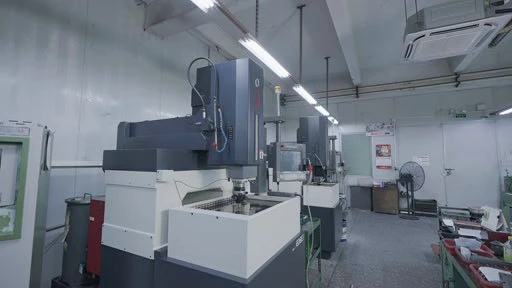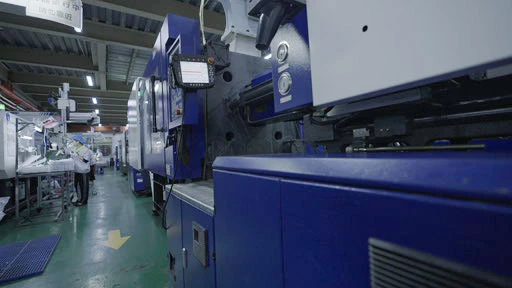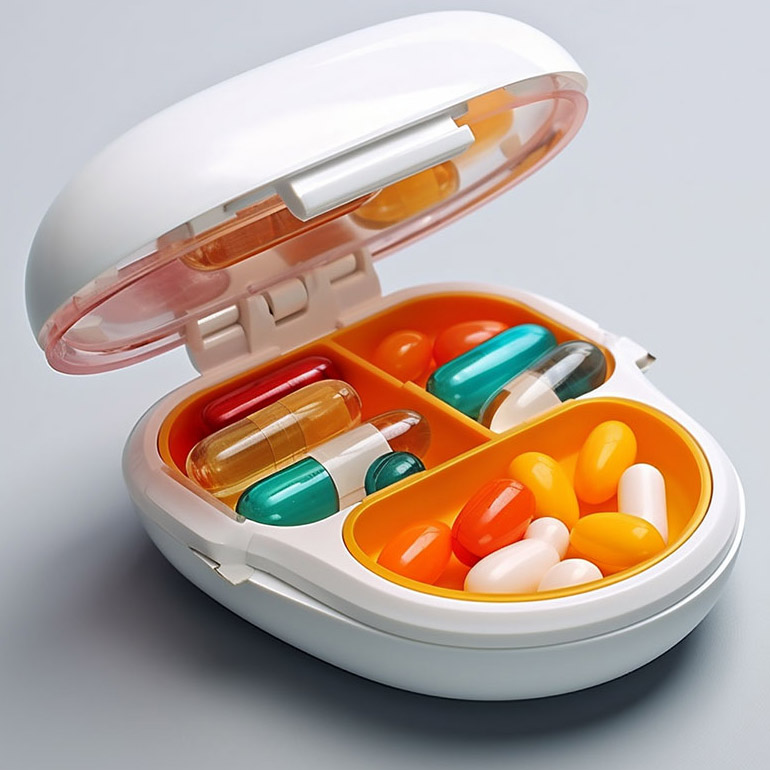“Your quotation only says ‘Mold cost: XX USD’—what exactly is included?”
“If the 3D model was only confirmed verbally and the mold is wrong, who pays for the rework?”
“Initial tooling price is very low, but after we place the order they say ‘material upgrade’ and add 30% more?”
If you’re a buyer or project manager sourcing injection molds and molded parts, these situations probably feel familiar.
Dongguan WorldboundGroup Plastic Products Co., Ltd. (“WorldboundGroup Plastics“) focuses on custom injection mold making and plastic injection molding, serving electronics, home appliances and automotive components, and operates under a strict ISO 9001 quality management system.
Based on years of shop-floor experience, this guide shares three practical methods to help you avoid scams, standardise technical communication, and get transparent quotations from your injection molding supplier.

1. Three Ways to Spot “Broker-Only” Injection Molding Suppliers and Avoid Low-Price Traps
1.1 Verify Qualifications: 3 Steps to Confirm Real Manufacturing Capability
“Virtual factories” often claim “10+ years of experience” and “own toolroom and molding shop”, but their business license may have been registered only 1–2 years ago, and they may not have any actual tooling or molding equipment.
How to verify:
- Request the business license
- Check the establishment date (prefer suppliers that have been operating for 5+ years and show no abnormal business records).
- Ask for factory walk-through video
- Focus on whether they have a proper toolroom (CNC machining centres, EDM, wire-cut EDM, surface grinders).
- Look at injection molding machines and brands (mainstream brands such as Haitian, Chen Hsong, etc. are generally more reliable).
- Ask about production planning
- A genuine manufacturer can provide a 3-month capacity / production schedule.
- A pure trading or “bag factory” broker will usually dodge the question or give vague answers.
1.2 Guard Against Undercutting: 3 Line Items Your Tooling Quote Must Clarify
“USD 5,000 for the mold”, “30 days lead time”—behind such tempting prices, there are often hidden < substantial>extra charges later (“mold base upgrade +30%”, “trial run charged separately”, etc.).
Key to avoiding this: insist that the quotation clearly specifies:
- Materials
- Mold base (e.g. S50C mold base steel)
- Cavity / core steel (e.g. H13, 738, 718H, etc.), with brand and grade indicated
- Manufacturing processes
- Whether the price includes CNC roughing & finishing, EDM, wire-cut EDM, drilling, fitting, polishing, texturing, etc.
- T0 / T1 mold trial(s)
- Number of free mold trials (commonly 2–3 rounds agreed by both sides)
- Whether resin, labour and machine time for these trials are included in the tooling price
If the supplier refuses to spell these out, be prepared for “terms and conditions” to show up later—usually with extra cost attached.
1.3 Validate Real Cases: Two Questions That Expose Exaggerated Claims
“Served XYZ global brand”, “Annual output: one million parts”—without evidence, these are just slogans.
Verification tips:
- Ask for cases from the past 12 months
- For example: “For an electronics housing project, how long did it take you to go from DFM to mass production?”
- A structured, professional supplier will answer 30–45 days for a normal project (including DFM review, mold design, machining, and about three rounds of mold trials).
- Ask for physical samples / contract snapshots
- Request production samples (you can check mold ID number engraved on the part).
- Or ask for redacted contract pages (sensitive information hidden), together with quality inspection reports (dimensional inspection with actual measured values, material analysis / COA).
2. Standardising Drawing & DFM Communication in 4 Steps – Stop “Wrong Mold” at the Source
Relying on verbal confirmation of drawings is planting a time bomb.
From 14 years of tooling and molding experience, WorldboundGroup summarises a robust approach:
Written confirmation + DFM / structure review + resin locking + acceptance criteria
= avoid rework and dispute.
2.1 Template 1: DFM / Structure Feasibility Review (Issued Within 3 Working Days)
After receiving the 2D/3D part data, the tooling engineer should proactively highlight issues instead of jumping straight into machining:
Key items:
- Wall thickness uniformity
- Example: walls at 2.0 mm may be recommended to increase to 2.5 mm to reduce sink marks and warpage.
- Gate location and runner layout
- Avoid gating directly on cosmetic A-surfaces whenever possible; consider sub-gates, tunnel gates, or edge gates in non-cosmetic areas.
- Draft angle
- Ensure sufficient draft (≥ 1°) on all vertical faces to prevent scuffing, drag marks, and sticking during ejection.
A formal DFM / Design for Manufacturability Report summarises these points, with screenshots and suggested modifications, and must be acknowledged by the customer in writing.
2.2 Template 2: Resin / Material Confirmation Sheet (Signed and Filed by Both Parties)
| Material Information | Details | Remarks |
|---|---|---|
| Brand / Grade | CHIMEI ABS PA-757 | General-purpose ABS with high impact |
| Origin | Taiwan | Original COA / material certificate provided |
| Environmental rating | RoHS 2.0 compliant (10 restricted substances, including 4 heavy metals) | Test report issued within the last 6 months |
This Material Confirmation Sheet is signed by both parties and attached as a formal annex to the contract.
Once signed, any change in resin (e.g., “downgrade from imported ABS to local ABS”) must be requested via a Change Request and evaluated for its impact on cost and part performance.
2.3 Template 3: Critical-to-Quality (CTQ) Dimension Checklist
| Dimension Location | Nominal (mm) | Tolerance | Measuring Equipment | Remarks / Function |
|---|---|---|---|---|
| Latch height | 8.5 | ±0.1 | CMM (calibrated) | Impacts assembly clearance |
| Screw hole diameter | 5.0 | ±0.05 | Plug gauge (Go / No-Go) | Prevents screw loosening / pull-out |
This checklist defines CTQ dimensions, tolerances and measurement methods.
At T1/T2 mold trial, the supplier must provide FAI (First Article Inspection) reports referencing this table.
2.4 Template 4: Mold Acceptance Checklist (Confirmed by Both Parties)
| Inspection Item | Quantitative Standard | Tool / Method | Remarks |
|---|---|---|---|
| Cavity / core dimensional accuracy | ≤ ±0.02 mm | CMM (calibrated) | Affects assembly fit and function |
| Cavity surface roughness | Ra ≤ 0.8 μm | Surface roughness tester | Key indicator for cosmetic parts |
| Guide pin / bush clearance | ≤ 0.03 mm | Feeler gauge | Affects smooth opening/closing of mold |
| Cooling circuit sealing | 10 bar pressure, hold 30 min, no leakage | Pressure test bench | Ensures stable and uniform cooling |
This becomes the reference document at mold FAT (Factory Acceptance Test) and before mold shipment to the customer.
3. Eight Must-Have Line Items in Your Tooling Quote – Avoid Arguments Later
A well-structured tooling quotation is the core weapon against hidden traps.
WorldboundGroup’s standard quotation template includes at least the following cost items:
| Cost Item | Scope Included | Notes (to avoid disputes) |
|---|---|---|
| Design / Engineering | DFM review, basic moldflow analysis (one run) | Any customer design change requires a formal Engineering Change Request (ECR) specifying change content and impact evaluation (extra engineering hours/cost). Effective upon both parties’ signatures, charge design hours at the agreed engineering rate sheet.< for each engineer level (junior/senior)/td> |
| Mold steel & mold base | S50C mold base + H13 cavity / core (domestic or imported options) | Material certificates and hardness reports provided (e.g., HRC 48–52). |
| Machining | CNC machining, EDM, wire-cut EDM, fitting | Special coatings or surface treatments (e.g., Ni-plating, PVD) are quoted separately. |
| Mold trial | 2–3 rounds of T0/T1 trials (including resin, labour, machine time) | Additional trials beyond the agreed number are charged based on actual resin consumption + labour + machine-hour rate. |
| Pilot run / small-lot sampling | 50–100 pcs samples (including packaging) | Used to validate mass production process stability. If the defect rate during the pilot run is≥ 5%, rework is free of charge. |
| Mold life | Guaranteed service life: 500,000 shots | Supplied with a Mold Maintenance Manual; WorldboundGroup offers two free preventive maintenance services within the first 3 months (including cleaning and lubrication of guide pins). |
| Logistics | Shipment from factory to customer’s designated location (ground freight) | Additional freight charges apply to remote regions depending on the carrier quotation. |
You can use this template as a checklist when evaluating any tooling quotation—if several of these items are missing, you should treat the quote as high risk.
Summary: 3 Practical Steps to Stay Out of Trouble with Injection Molds
When selecting an injection mold maker and molding partner, keep these three core principles in mind:
- Verify the supplier
- Always request the business license + factory video tour + recent project cases to eliminate broker-only suppliers.
- Lock in standards before cutting steel
- Use drawing confirmation forms (covering DFM review, material, CTQ dimensions, and mold acceptance criteria) to lock all technical details in writing.
- Audit the quotation in detail
- Check at least eight cost items (mold trials, mold life, pilot run, etc.) and reject vague or one-line quotes such as “Mold: XX USD”.
Do this, and you already avoid most of the typical pitfalls in custom plastic tooling and injection molding.
FAQ – Common Questions About Injection Mold Making & Molding
Q1: What are the acceptance criteria for a new injection mold?
A: WorldboundGroup uses the Mold Acceptance Checklist as the main reference. Key criteria include:
- Cavity / core dimensional tolerance ≤ ±0.02 mm
- Cavity surface roughness Ra ≤ 0.8 μm for cosmetic areas
- Guide pin / bush clearance ≤ 0.03 mm
- First mold trial (T1/T2) sample yield ≥ 95% based on the agreed CTQ dimensions and appearance standards
Q2: How are engineering changes (design modifications) charged?
A: Any change must be initiated through a formal Engineering Change Request (ECR):
- The ECR clearly describes the change, and the engineering team evaluates impact on lead time and cost (e.g., extra machining, new electrodes, new cavity inserts).
- Both parties sign to confirm before implementation.
- Engineering time is charged according to engineer level (junior / senior) and the actual hours spent, as per a pre-agreed engineering rate sheet.
Q3: Is a small-lot pilot run really necessary before mass production?
A: Yes—it is highly recommended. Around 80% of mass-production issues (dimensional drift, cosmetic defects, warpage, short shots, etc.) can be discovered at the pilot run stage, which prevents large batches of scrap.
WorldboundGroup typically offers 50–100 pcs pilot runs, including:
- Resin
- Packaging
- 100% inspection report for CTQ dimensions and key appearance criteria
This allows both sides to fine-tune process parameters and quality control before ramping up.
Appendix: Plain-Language Explanations of Key Injection Molding Terms
| Term (Industry) | Plain Explanation | Example Scenario |
|---|---|---|
| Mold base | The “frame” of the injection mold that holds the cavity, core, and all functional components | If the mold base deforms, the parting line cannot close properly, and part dimensions will drift. |
| Cavity / core | The “negative” and “positive” shapes that actually form the plastic part | Poor polishing of the cavity surface will result in a rough part surface. |
| Mold trial (T0/T1) | The first trial shots of a new mold to validate design and process | If a short shot occurs in T0, the gate size or processing window must be adjusted. |
| 8D report | Eight-Discipline problem-solving report for quality issues | When the defect rate exceeds the agreed limit, an 8D report is used to trace the root cause and define corrective actions. |
| Moldflow analysis | CAE simulation of melt flow, packing, cooling, and warpage inside the mold | Moldflow can reveal potential weld lines, air traps and unbalanced filling before cutting steel. |
You can treat this article as a checklist and framework when working with any injection mold maker. If a supplier can’t provide documentation and standards at this level, they are probably not yet ready to handle demanding injection molding projects.






